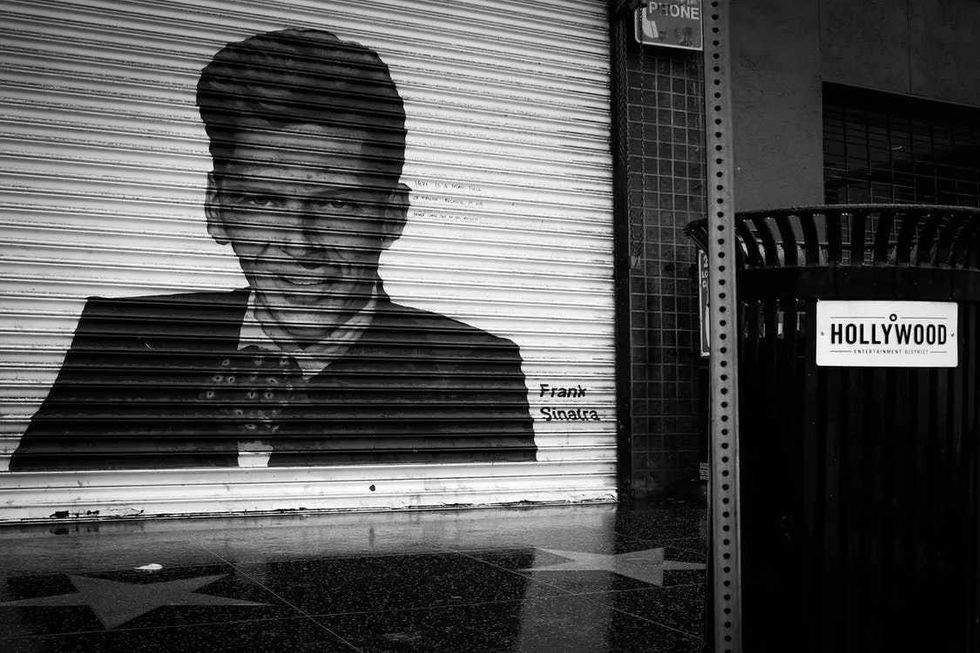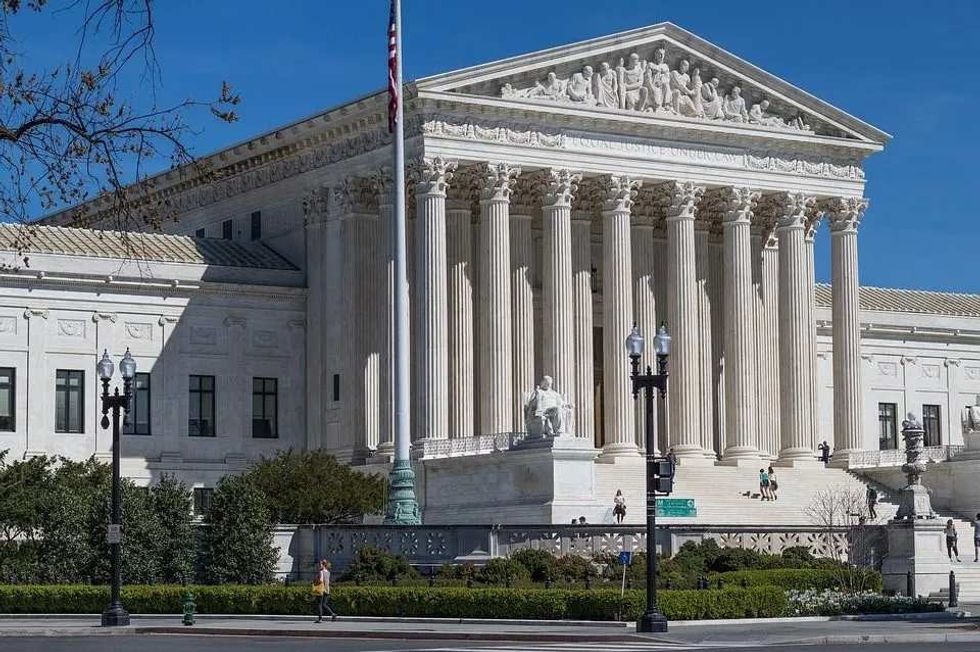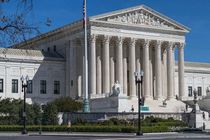1954 Facts: Learn All About Major Events That Took Place In 1954

As far as historical significance goes, 1954 was one of the most historically significant years for several reasons.
One of the main facts related to the importance of this year was the Supreme Court ruling of the Brown v. Board of Education case.
This event is considered to be a landmark judgment in the United States, in the country's fight for racial equality and civil rights. However, apart from the United States, other parts of the world were also going through political shifts.
In addition to politics, there were also strong cultural changes throughout the world. In the United States, rock and roll was just starting to evolve and make its presence known in the music world.
While Elvis Presley was at the start of his career, artists like Frank Sinatra and Dean Martin were already well-known faces dominating the music circle. Movie stars like John Wayne, Jane Wyman, and Gary Cooper were also exceedingly popular. Television and radio were also flooded with some of the best shows, which are still considered classics today.
Brown Vs. Board Of Education
One of the most notable cases in the history of the United States, that furthered the cause of racial equality in the country was the landmark decision of the Supreme Court in the case Brown v. Board of Education. There are several historical facts associated with this case.
Despite the end of slavery, racial segregation in the United States was a dominating factor that influenced every aspect of life. School segregation was considered to be legal.
The legality of this system was based on an 1896 Supreme Court decision, known as Plessy vs. Ferguson, where the court ruled segregation legal as long as schools for white people and black people had equal facilities.
However, while the concept of equal facilities existed on paper, in reality, schools for black students lacked basic necessities, like running water. In addition, black students had a significantly higher amount of school fees compared to white students. This situation continued for decades, and even throughout 1950 when school segregation was mostly limited to southern states.
The Brown v. Board of Education case was started by Oliver Brown, father of Linda Brown, who was a third-grade student. The Browns were Kansas residents, and laws in Kansas legalized racial segregation in public schools.
Linda had to cross a significant distance every day, to attend school. Hence, Oliver Brown, on the advice of Thurgood Marshall, a well-known NAACP chief counsel, decided to bring a lawsuit against the school district of Topeka.
Though the case was initially filed in 1951 in the District Court of Kansas, the ruling made by three judges was against the Brown family. Subsequently, this case along with four other cases related to segregation in public schools was unified and presented before the Supreme Court by Thurgood Marshall.
This complete case became known as Brown v. Board of Education.
Thurgood Marshall made several compelling arguments against the practice of school segregation in front of Supreme Court judges. He was successful in not only upholding the fact that racial segregation of schools was a violation of the U.S. Constitution's 14th Amendment but also left a detrimental psychological effect in the minds of black students.
Ultimately on May 17, 1954, the Supreme Court unanimously deemed segregated schools unconstitutional. Though this judgment was only applicable to public schools, Brown v. Board of Education served as a reminder that separate can never be equal, rendering the Plessy v. Ferguson judgment invalid.
Desegregation Of America's Schools
Though the outcome of Brown v. Board of Education was a landmark judgment, it did not mention any provisions on how desegregation of schools would take place. Additionally, plenty of southern states, especially, South Carolina, Alabama, Georgia, and a few others were against the judgment and protested.
This began a long struggle to successfully integrate students of both races into America's schools. One of the first school boards in the south to comply with the decision of Brown v. Board of Education was in Greensboro, North Carolina.
For years, this remained the only school board that declared an intention of complying with the Supreme Court's judgment. Every other school in the south resisted the application of desegregated schools.
Although Greensboro was one of the first school boards to accept the ruling, it was one of the last to implement the actual desegregation of schools. This was part of a larger problem in North Carolina, where even though the judgment from this case was legally accepted, it was still resisted.
In the deep south, where resistance to Brown v. Board of Education was more prominent, the attorney general of Texas held campaigns that would present legal obstacles from implementing desegregation effectively.
However, there were signs of progress. For instance, on August 23, 1954, Charleston, Arkansas witnessed one of the earliest implementations of desegregation, when 11 black students attended a school that traditionally only accepted white students.
The whole process went quite smoothly without the intrusion of any news media. A similar occurrence also took place in Fayetteville, Arkansas that same year.
The overall delay in the implementation of school integration policies led to the Supreme Court following up with a case known as Brown II in 1955. Ultimately, at the end of this case, the court ordered desegregation to take place at a 'deliberate speed'.
Many legal scholars at the time criticized the court's ambiguous statement since this ruling did not mention any deadlines.
Pop Culture History In 1954
Pop culture history of 1954 was quite fascinating, as it encompassed iconic songs, movies, fashion icons, and so on. Let's dive into some of the best pop culture history facts of 1954!
The highest-grossing film of 1954 was, 'White Christmas', a classic film that is still loved today. The film had some of the biggest names in the industry, including; Danny Kaye, Bing Crosby, and also featured songs written by Irvin Berlin, one of the greatest songwriters.
The infamous Marilyn Monroe also made her presence known in the box office with her hit film titled, 'There's No Business Like Show Business'.
Other top movies of the time were, 'The Caine Mutiny', 'Seven Brides For Seven Brothers', and 'Magnificient Obsession'. The animated film version of, 'Animal Farm' written by George Orwell was also released this year, which was commissioned by the United States as a form of propaganda film against Stalin's regime in the Soviet Union.
Some popular names in music during this time were Frank Sinatra, Perry Como, Dean Martin, and Doris Day. Additionally, several songs influenced this year to a great extent.
For instance, the song 'Shake, Rattle and Roll', originally sung by Big Joe Turner, was not only one of the biggest hits of the year but is considered one of the greatest songs of all time.
Coming to the world of sports, the New York Giants became the World Series Champions this year. In the National Hockey League playoff, the Detroit Red Wings showed exceptional performance on the field and won the Stanley Cup Championship.
Famous sportsman Eddie Matthews was featured on the cover of 'Sport's Illustrated' this year. In international sports, West Germany won the World Cup for soccer.
In fashion, Miss USA in 1954 was Miriam Stevenson, while Miss America was Evelyn Ay. Did you know that Bermuda shorts were first introduced in 1954?
Several books also caught the attention of the people and became best-sellers of the year. This year was particularly notable for the release of two parts of 'The Lord Of The Rings', in addition to other significant literary works like 'Lord Of The Flies', 'Love Is Eternal', 'Mary Anne', and 'The Royal Box'.

Education In Postwar Europe
After World War II ended, European daily practices changed completely. One such change was noticed in the field of education, which evolved greatly after the end of the war.
From 1943 to 1954, the Soviet Union implemented mass changes to its educational policies, one of which was ending co-educational schools. While earlier, the government upheld the idea of gender equality, this decision was certainly a step in a different direction.
Being implemented in prominent schools of urban areas, this decision was taken to give boys a militarized education, whereas the girls were taught lessons closer to the traditional social norms they were supposed to take part in. although this started under Stalin, it continued for well over a year after his death.
In 1954, the gender-segregated schools were finally done away with, and co-educational schools reopened.
For the rest of Europe, the areas occupied by the Nazi regime had education systems in place which were influenced by Nazi ideologies. Hence, once the war ended, most of these nations debated the role of political ideologies in school education. Additionally, most countries could not pass any legislation to make necessary reforms to pre-school education until 1960.
The only two exceptions to this case were Hungary and Czech Republic. Both of these countries were under the Soviet Union and valued the importance of pre-school education. Hence, right after the war, pre-school education developed in an accelerated manner in Soviet areas of Europe, as opposed to Western Europe.
Additionally, the end of the war also marked the beginning of implementing vocational courses as part of the curriculum. This was particularly done in Italy and Finland, where necessary legislation was also passed to standardize the process.
There were changes made to teacher's training programs as well. In Denmark, 1954 witnessed the passing of laws about how teachers, of 'folkeskoler', should be trained. In the Netherlands, university students could take an extra training course to qualify as teachers. This system was started in 1954.
American Radio And Television Shows In 1954
For American radio and television, 1954 was quite a brilliant year, as some of the best shows aired through both radio and television. Continue reading to discover more about these shows!
A detective radio program, by the name of 'Crime and Peter Chambers', was released around this time on the radio by the NBC network. This show ran from April 6th to September 7th and was popular among its audience even in 1955.
The famous radio comedy show 'Hancock's Half Hour' also debuted this year, and was one of the earliest examples of situation comedy.
The entire radio series ran for six seasons, and later it was picked up by television, where the show ran for seven long seasons. Another famous radio series developed by NBC, titled 'Dr. Sixgun', also premiered this year and received a lot of praise.
Quite a few radio shows also aired their last episodes in 1954. Some of these shows were 'Family Skeleton', 'Quiz Kids', 'House Of Glass', and 'Rock Fortune'.
The top television shows in 1954 were 'I Love Lucy', 'Dragnet', 'The Toast Of The Town', 'The Jack Benny Show', and 'Ford Theatre'. Interestingly, 'The Jack Benny Show' ran for nearly 30 years and was aired both on television and radio.
Did You Know...
April 11th, 1954 is often considered to be the most boring day in history. This conclusion was reached by a computer scientist, who ran his search engine, True Knowledge, through its database which revealed that nothing of consequence occurred on this date.
Hence, it was marked as the most boring day. However, a general election in Belgium was held on this day, so maybe, it was not so boring after all!
Quite a few significant inventions were also made in 1954. One of the most important was the invention of silicon solar cells, which could be used practically. This invention was done by Bell Labs, a research facility of industrial nature.
In international politics, in July 1954, the U.K. witnessed the end of the food rationing program, which was in place for 14 years. Around the same time, the Geneva Conference also took place to settle some remaining issues regarding the Korean War, with diplomats belonging to South Korea, China, North Korea, USSR, and the U.S. participating in the conference.
The famous battle between the French Union and the communist revolutionaries of Viet Minh, named Battle of Dien Bien Phu, was also fought this year. In 1954, Hurricane Hazel struck the city of Toronto in Canada causing 81 casualties. Before entering Canada, this hurricane devastated North Carolina in the United States.
We Want Your Photos!
More for You
Bachelor of Arts and Law specializing in Political Science and Intellectual Property Rights

Anusuya MukherjeeBachelor of Arts and Law specializing in Political Science and Intellectual Property Rights
With a wealth of international experience spanning Europe, Africa, North America, and the Middle East, Anusuya brings a unique perspective to her work as a Content Assistant and Content Updating Coordinator. She holds a law degree from India and has practiced law in India and Kuwait. Anusuya is a fan of rap music and enjoys a good cup of coffee in her free time. Currently, she is working on her novel, "Mr. Ivory Merchant".
Disclaimer
1) Kidadl is independent and to make our service free to you the reader we are supported by advertising. We hope you love our recommendations for products and services! What we suggest is selected independently by the Kidadl team. If you purchase using the Buy Now button we may earn a small commission. This does not influence our choices. Prices are correct and items are available at the time the article was published but we cannot guarantee that on the time of reading. Please note that Kidadl is a participant in the Amazon Services LLC Associates Program, an affiliate advertising program designed to provide a means for sites to earn advertising fees by advertising and linking to Amazon. We also link to other websites, but are not responsible for their content.
2) At Kidadl, we strive to recommend the very best activities and events. We will always aim to give you accurate information at the date of publication - however, information does change, so it’s important you do your own research, double-check and make the decision that is right for your family. We recognise that not all activities and ideas are appropriate for all children and families or in all circumstances. Our recommended activities are based on age but these are a guide. We recommend that these ideas are used as inspiration, that ideas are undertaken with appropriate adult supervision, and that each adult uses their own discretion and knowledge of their children to consider the safety and suitability. Kidadl cannot accept liability for the execution of these ideas, and parental supervision is advised at all times, as safety is paramount. Anyone using the information provided by Kidadl does so at their own risk and we can not accept liability if things go wrong.
3) Because we are an educational resource, we have quotes and facts about a range of historical and modern figures. We do not endorse the actions of or rhetoric of all the people included in these collections, but we think they are important for growing minds to learn about under the guidance of parents or guardians.







